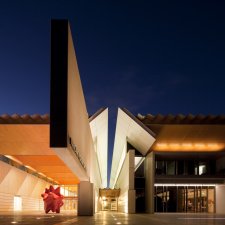- About us
- Support the Gallery
- Venue hire
- Publications
- Research library
- Organisation chart
- Employment
- Contact us
- Make a booking
- Onsite programs
- Online programs
- School visit information
- Learning resources
- Little Darlings
- Professional learning
Sir William John Macleay (1820-1891), pastoralist, politician, collector and promoter of science, had just begun to study medicine in his native Scotland when family circumstances dictated his migration to New South Wales. His uncle, Colonial Secretary Alexander Macleay, had arrived in Sydney in 1826 with a giant collection of insects, and had acquired significant landholdings including 54 acres at Elizabeth Bay, on which he was to build Elizabeth Bay House. On his arrival in early 1839 William John fell in with his cousins, William Sharp Macleay and (Sir) George Macleay, who were both interested in natural history. He joined George on the land, and soon acquired holdings of his own, which by the 1870s included a vineyard near Wagga Wagga. From 1841 he was a magistrate at Wagga Wagga and in 1855 he was elected to the Legislative Council for the Lachlan and Lower Darling Pastoral District. From 1856 to 1858 he held a seat in the Legislative Assembly; later, for 15 years he represented the Murrumbidgee in the Assembly. He moved and chaired various select committees: on harbour defences, the unemployed, and the existence of a conspiracy for treason (implicating Parkes, whom Macleay detested, it came to naught). Later he presided over royal commissions on oysters, fisheries and the Melbourne and Sydney exhibitions of the 1870s and 1880s. Meanwhile, in 1862 he helped to found the Entomological Society of New South Wales. By the mid-1860s he had thousands of insect specimens, many inherited from his cousin William Sharp (who died a single man in 1865, having lived at Elizabeth Bay house from 1848). From 1865 William John leased Elizabeth Bay House from his cousin George, who lived abroad as a bon-vivant from 1859; William John became the first President of the Linnean Society of New South Wales, but it was his home, Elizabeth Bay House, which became a hub for collectors. In the 1870s he funded and organised the first Australian scientific expedition to the Torres Strait and New Guinea. Though vicissitudes caused its early abandonment, the voyage of the Chevert achieved Macleay’s aim, yielding a stupendous collection of fish, reptiles, corals, vertebrates, invertebrates and birds as well as ethnographic artefacts and at least one mummy. Nonetheless, he was heavily criticised in the press for failing to promote New Guinea as a site for European colonisation and exploitation. Resident at Elizabeth Bay House until his death, he not only encouraged scientific rigour in others, but himself wrote high-quality papers, which he published in Australian journals. His major works, appearing in the 1880s, were a two-volume catalogue of Australian fishes and the Census of Australian Snakes. Married from the age of 37, William John died ‘without legal issue’, but money he left to the University of Sydney and the Linnean Society has since been used for a Linnean Macleay lectureship in microbiology and four Linnean Macleay Fellowships. The collections he inherited from Alexander and William Sharp, as well as his own hoard, passed to the purpose-built Macleay Museum of the University of Sydney.
Collection: National Portrait Gallery
Purchased 2014



On one level The Companion talks about the most famous and frontline Australians, but on another it tells us about ourselves.



Visit us, learn with us, support us or work with us! Here’s a range of information about planning your visit, our history and more!



We depend on your support to keep creating our programs, exhibitions, publications and building the amazing portrait collection!